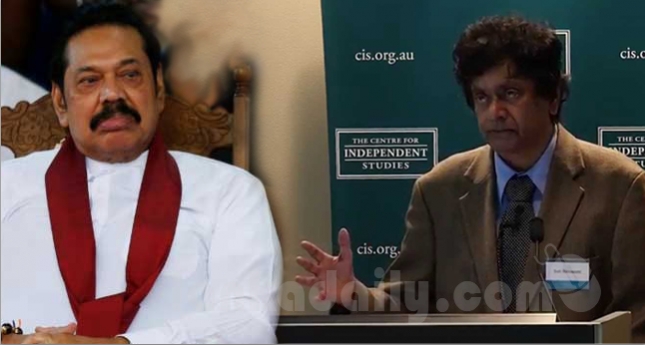There seems to be a serious misunderstanding about Sri Lanka’s Constitution with respect to the President’s power to dissolve the Parliament. It is claimed that under the parliamentary system, the President may dissolve the Parliament at his or her discretion at any time during its term. This is the central question before the Supreme Court in the proceeding challenging the President’s proclamation purporting to dissolve the current Parliament. I have expressed my opinion on this question elsewhere.
The purpose of this note is to clear up another confusion. Hon Mr Mahinda Rajapaksa, among others, have cited as a precedent the dismissal of the Australian Prime Minister Gough Whitlam and the dissolution of both Houses of Parliament by the Governor-General in 1975. This involves serious misunderstandings of the facts concerning the dismissal and the relevant provisions of the Australian Constitution.
The political events surrounding the dismissal of Whitlam were both acrimonious and controversial. They are too complex to document here. The immediate cause of the dismissal and dissolution was the Senate’s denial of supply to the government by deferring decisions on two Appropriation Bills which had already received Lower House approval. The protracted deadlock breaking process set out in s 57 (that can involve a double-dissolution and a General Election) could not be used as supply would have run out by then. G-G John Kerr tried but failed to persuade Mr Whitlam to advise dissolution on the principle that a government that cannot secure supply through Parliament should either resign or advise a new election.
The G-G then sought the following guarantees from the Leader of the Opposition Mr Malcolm Fraser, namely, that if appointed Caretaker PM, he would:
1. Ensure that the Appropriation Bills will be passed by the Senate to secure supply,
2. Advise the G-G to dissolve both House and hold a general election, and
3. Maintain the status quo on policy, appointments etc during the caretaker period.
The G-G, armed with these assurances, dismissed Whitlam, appointed Fraser as Caretaker PM and dissolved both Houses. The two Houses can only be simultaneously dissolved under s 57 to break deadlocks. There were several other bills of the Whitlam government that were deadlocked and served as triggers for a double dissolution.
It is important to note a few salient constitutional rules and principles and points of difference between the Whitlam saga and the present impasse in Sri Lanka.
1. The claim that in the classic Westminster parliamentary democracy, the monarch has untrammelled power to dissolve the Parliament is fallacious. Since the early 19th Century at least, the monarch was constrained by convention to follow the PM’s advice and the PM was likewise restrained by convention. Whatever discretion the monarch had in the UK was removed by the Fixed-term Parliaments Act 2011 (c. 14). The Act, which fixes the term of the House of Commons as 5 years, allows earlier dissolution only if:
(a) A vote of no confidence in the government is carried in the House of Commons, or
(b) The House of Commons requests a dissolution by a vote of two thirds of the House.
The Nineteenth Amendment incorporated these two conditions in limiting the President’s power to dissolve Parliament.
2. According to s 64 of the Australian Constitution, the Ministers, including the Prime Minister,serve at the pleasure of the Governor-General. The President of Sri Lanka has no such power. He or she must choose as PM a member likely to command the confidence of the House who can then be dismissed only by Parliament.
3. Unlike the Whitlam Government, PM Wickremasinghe and the Cabinet have obtained supply and have shown the ability to secure future funding for the government’s recurring expenditure.
4. Sri Lanka is not a classic parliamentary system in the Westminster model. The President’s has no prerogative powers. His powers are limited by the express words of the Constitution which he has undertaken by affirmation to observe.
Suri Ratnapala
Emeritus Professor of Law
The University of Queensland
Fellow of the Australian
Academy of Law Attorney-at-Law, Sri Lanka





